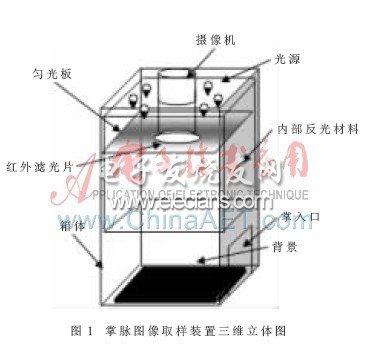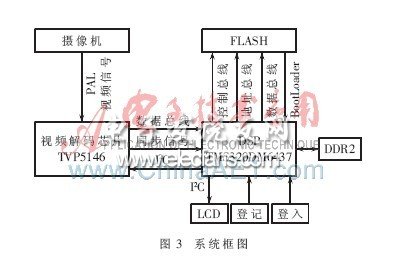With the wide spread of online transactions of banks and enterprises and e-commerce systems such as e-government, government OA, CRM, ERP, etc., while improving our work efficiency, as the requirements for computer system information security are higher financial, government, telecommunications The reliability of user personal authentication technologies such as identity verification and passwords in the military industry has also received increasing attention. Biometric authentication, which is simple to operate and effectively prevents illegal users from logging in, has become a recognized most convenient and safe identity authentication technology.
The basic principle of vein authentication is to use near infrared rays to illuminate the palm, and the sensor reflects the light reflected by the palm. The key is that the hemoglobin flowing into the venous erythrocytes will absorb near-infrared rays near the wavelength of 760nm, resulting in less reflection in the veins, which will produce vein patterns in the impact. In other words, vein authentication uses the strength of reflected near infrared rays to identify the position of veins. The palm vein recognition method is to read the palm vein distribution map through an infrared sensor, and then compare it with the image template already stored in the system. Palm vein distribution maps are extremely difficult to forge. Statistics have shown that only 8 out of 10 million people have similar palm vein distribution maps, with an accuracy of up to 99.9%. Compared to fingerprint recognition technology, palm vein recognition technology has High recognition accuracy rate, false acceptance rate is less than 0.00008%, false rejection rate is 0.01%. And fingerprint false rejection rate is 0.1%.
In this paper, under the premise of constant light intensity, by repeatedly configuring the TVP5146's brightness and brightness contrast registers to collect palm vein images and facilitate the positioning of hand-shaped images. This method can simultaneously solve the problems of improving the contrast of the vein image and reducing the complexity of the algorithm for intercepting the effective area of ​​the palm vein image.
1 Palm vein image sampling device and optical system design
1.1 Design of palm vein image sampling device
Follow the following principles when designing the palm vein image sampling device:
(1) Make the collector feel comfortable with the collection process;
(2) The direction of the collected palm image is relatively fixed and unchanged, which is convenient for positioning processing of the collected image in the future;
(3) The environment is relatively closed, reducing the interference noise caused by the external environment.
The palm vein image sampling device is designed according to the above principles. The device is composed of 8 parts: palm entrance, light source, infrared filter, box, uniform light plate, internal reflective material, background and camera. FIG. 1 is a three-dimensional perspective view of a palm vein image sampling device.

The function description of each part of the device is as follows:
(1) Palm entrance: extend the hand from the entrance into the sampling device after flat extension, the distance between the palm and the camera is relatively fixed, so that the direction of the palm will not have a large deviation, and the focus can be taken to facilitate the positioning of the palm vein image.
(2) Light source: add near infrared light.
(3) Infrared filter: Since the relative spectral response of the camera to visible light is much greater than that of near infrared light, adding an infrared filter can filter out visible light and avoid visible light from affecting the imaging effect.
(4) Box: Although the infrared filter can be added to filter out visible light, the near-infrared light in natural light is very rich, and the box makes the collection environment relatively closed, which can avoid the external environment from affecting the collection effect.
(5) Uniform light plate: convert the array point light source composed of a group of near infrared light-emitting diodes into a relatively uniform surface light source.
(6) Internal reflective material: fill light for the system.
(7) Background: black background, after the image is binarized, it is easy to intercept the effective area of ​​the palm image.
(8) Camera: Take pictures.
1.2 Design of light source
In the near infrared region, body fluids and soft tissues are relatively transparent and have strong penetrating power. When the incident light wavelength is between 700 nm and 1 000 nm, it can penetrate the skin and muscles well and highlight the vein structure. In addition, the near-infrared light is not invasive to the human body and invisible to the human eye, and is very suitable for the collection of vein images.
This system uses a mixed light source with 850 nm as the main and 960 nm as the auxiliary to add light to the system. 850 nm near-infrared light can avoid the absorption of near-infrared light by other tissues of the human body, and can collect palm vein images of most people. The 960 nm light source has a large transmission depth and can capture vein images of people with thick palm fat layers. As shown in Figure 2, Figure 2 (a) shows the imaging of normal hands under 850 nm illumination, and Figure 2 (b) shows the comparison of the imaging of hands with thick fat layers under 850 nm and 960 nm illumination. The effect of near infrared spectroscopy on vein imaging is not discussed in detail in this article.

2 Hardware circuit design
Through the operation of the system control panel, you can control whether the collected palm vein images are registered or logged in. The camera collects analog images, digitizes the analog signals through the video decoding chip TVP5146, and stores the digitized images in DDR2 for pre-processing. Processing, save the preprocessed image into FLASH, and the recognition result is displayed by the liquid crystal module. Figure 3 is a system block diagram.

-
20A 120VAC Two Tamper-Resistant (TR) receptacle enhance electrical safety, preventing objects from being inserted into the outlet
-
The USB Ports are Class 2.0 and feature a combined power of 5Vdc,3.1 Amps
-
Terminal screws accept up to 10AWG copper or copper clad wire
-
The USB charge receptacle is to be installed in a wall box measuring at least 3"X2"X2-1/2", and wired in accordance with NEC acticle 314 box fill requirements
-
UL & CUL listed
-
With a wall plate
4A USB TR UL
4A USB TR UL,High Speed 4A USB TR UL,Universal 4A USB TR UL,Electrical 4A USB TR UL
Hoojet Electric Appliance Co.,Ltd , https://www.hoojetgfci.com